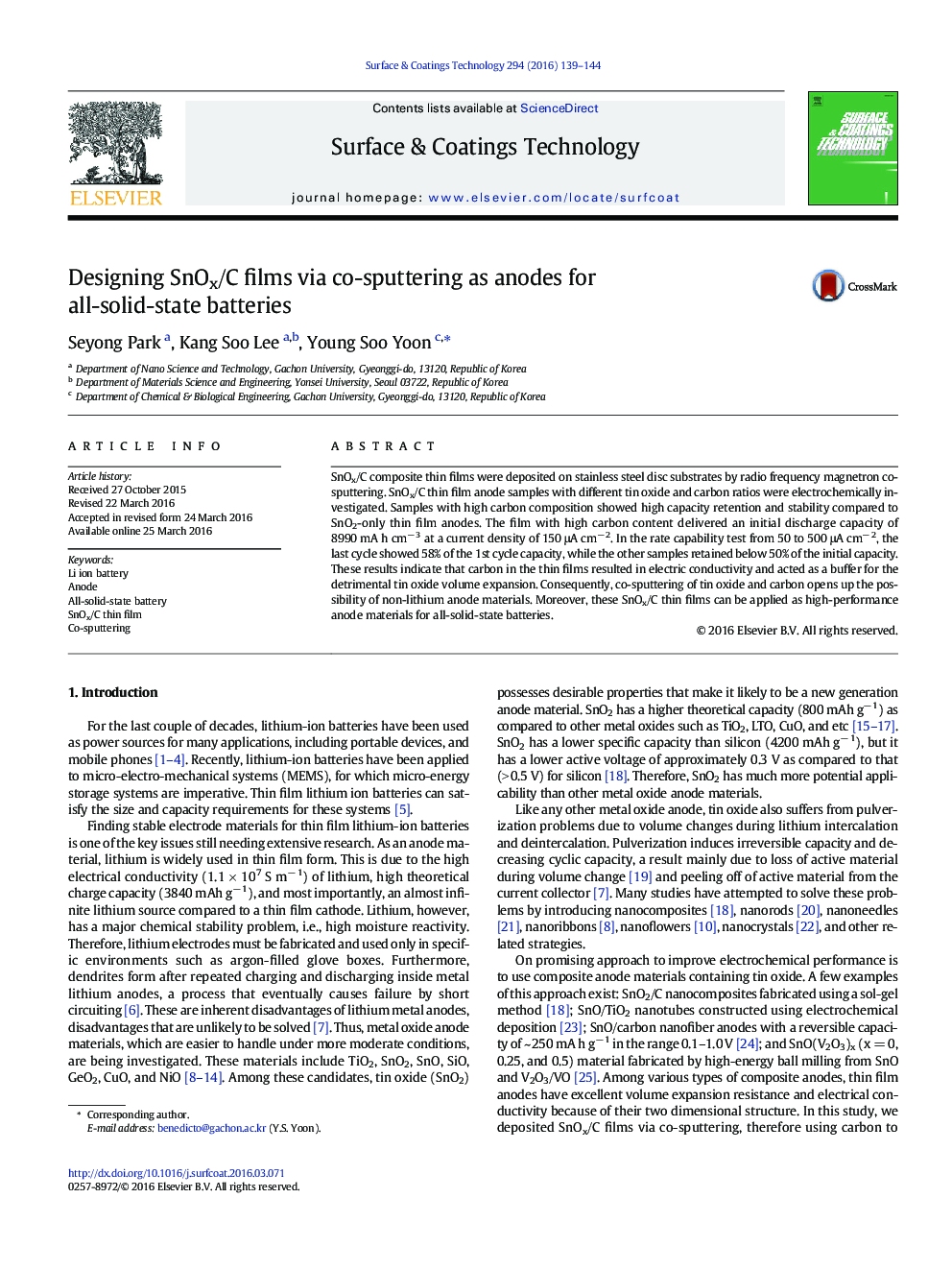| Article ID | Journal | Published Year | Pages | File Type |
|---|---|---|---|---|
| 1656422 | Surface and Coatings Technology | 2016 | 6 Pages |
•SnO2 and carbon have been co-sputtered to deposit thin film anodes.•Thin film anodes with high capacity and stable cyclability were obtained.•Carbon in the anodes can reduce the stress due to volume change.
SnOx/C composite thin films were deposited on stainless steel disc substrates by radio frequency magnetron co-sputtering. SnOx/C thin film anode samples with different tin oxide and carbon ratios were electrochemically investigated. Samples with high carbon composition showed high capacity retention and stability compared to SnO2-only thin film anodes. The film with high carbon content delivered an initial discharge capacity of 8990 mA h cm− 3 at a current density of 150 μA cm− 2. In the rate capability test from 50 to 500 μA cm− 2, the last cycle showed 58% of the 1st cycle capacity, while the other samples retained below 50% of the initial capacity. These results indicate that carbon in the thin films resulted in electric conductivity and acted as a buffer for the detrimental tin oxide volume expansion. Consequently, co-sputtering of tin oxide and carbon opens up the possibility of non-lithium anode materials. Moreover, these SnOx/C thin films can be applied as high-performance anode materials for all-solid-state batteries.
